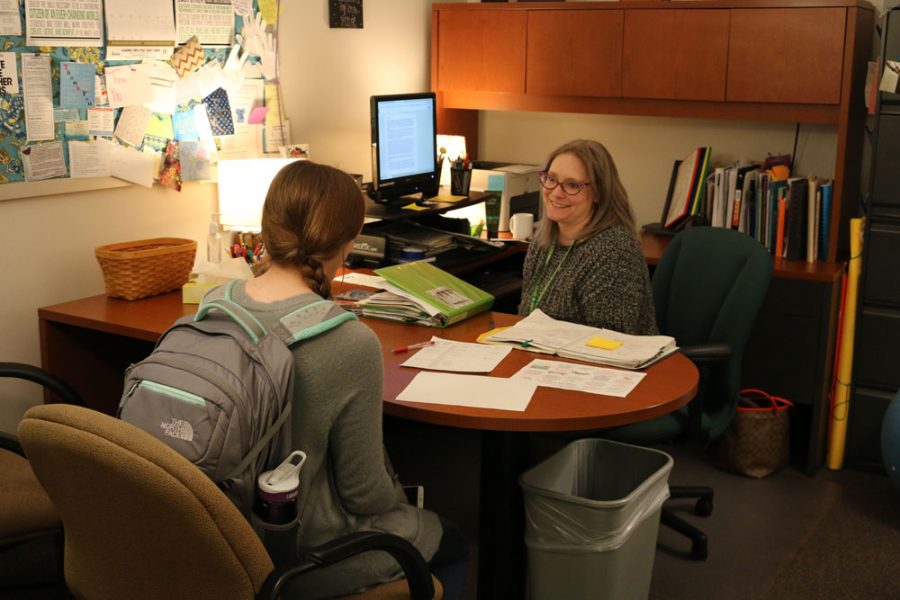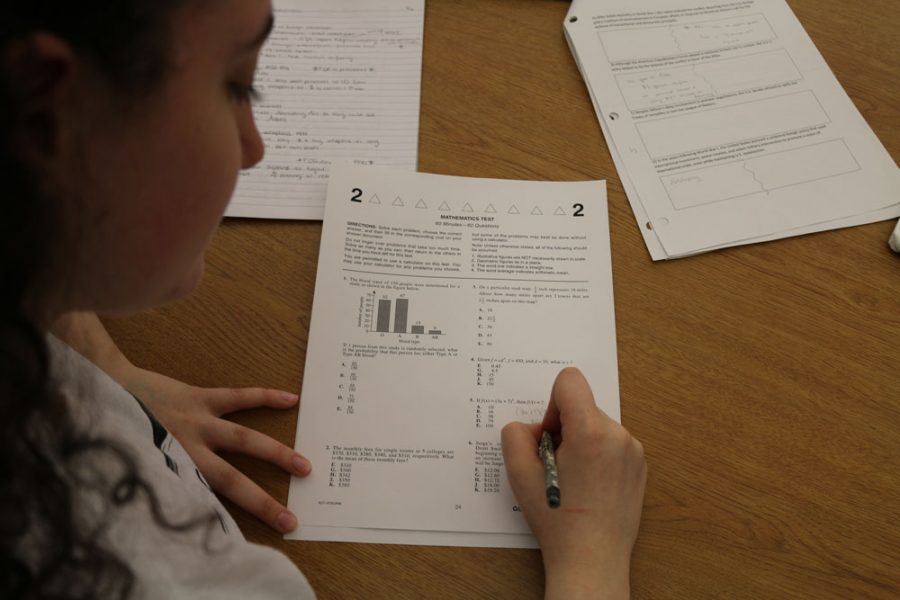Certain high school students like junior Nikki Briggs have experienced the negative effects of mental illness. During Briggs’ freshman year, it was hard for her to understand the disorder she was battling, and she didn’t have the distress tolerance skills in place to help her cope with the feelings she experienced.
“My doctors were constantly changing my medication and dosages. This caused me to miss a lot of school and get below average grades,” Briggs said. “This led to someone telling me I use my disease as a crutch and when people noticed I had signs of depression instead of helping me out and being supportive, they accused me of wanting attention.”
These comments only made the feeling of shame increase and led Briggs to hide the emotions she was experiencing. Each morning before walking into school, she put on a mask, one that could hide the dark feeling consuming her mind, in hopes no one would notice her inner turmoil.
Fewer than 20 percent of children and adolescents with diagnosable mental health problems receive treatment. Early mental health support can help a child before problems interfere with other developmental needs, according to the United States Department of Health and Human Services.
Briggs says the way she was treated by peers and teachers left her feeling worthless and unaccepted, which led to thoughts of hopelessness. The comments caused her to have an overwhelming sense of guilt, which left her feeling, unwanted, looked down upon and discriminated against. This led her to lose motivation and eventually start to miss school. These feelings were all because people didn’t understand she had no control over the way she felt, as her emotions were caused by an illness.
Outreach counselor Lesley Thalhuber witnesses the detrimental effects mental illness has on students every day. She works to address the issue through educating teachers, providing resources and allowing students access to the tools they need.
“It affects learning; it affects everything when mental health is the issue we are talking about,” Thalhuber said. “Through the lens I see it through if a student’s physical or mental health is not being addressed, it’s gonna be really hard to learn.Your brain is just somewhere else doing something different, maybe in survival mode more than learning mode.”
For students who are struggling with mental illness, dealing with this pressure to always seem happy and perform well academically can be even more challenging. Thalhuber hopes that by educating teachers and other staff they will develop a better understanding of these issues. She encourages those who are struggling to either reach out or be willing to talk ,as she knows how empowering and helpful it can be.
Sometimes when a student is feeling down, the darkness lies behind a smile they paint on every morning. Getting out of bed can be a major task by itself. With depression, at times there is no apparent reason for why a person feels the way she does. In situations like these, Thalhuber stresses the importance of kindness and self care. These actions are crucial when dealing with an issue that affects one in five youth, ages 13 to 18.
Similar to Briggs, sophomore Maya Bell feels that teachers and peers are judging her because of a mental illness. She struggles with a severe anxiety disorder which impacts her academic life greatly.
“Growing up in a loving household and an open community, I have rarely been impacted by the stigmas of mental health,” Bell said. “However, I’m embarrassed to admit that I have a 504 plan for my severe anxiety. I fear that the plan could make my efforts in school seem less than they are, like I’m getting cut an easy break on my work load just because I get nervous sometimes. That being said, when my teachers give me an extension on an assignment because of my 504 plan, I don’t usually tell my friends because I’m scared that they’ll think I have it easier than them and that’s the only reason I get good grades.”
Sara Tyler, a local therapist, realizes education helps others gain understanding, but it takes more than throwing facts at community members. She believes support starts when students stand up and share their own personal experiences in an effort to help others.
“We continue to educate students and families about early warning signs for depression and suicidal behavior,” Tyler said. “Students reaching out for help and working directly with teachers is the most effective way. As students realize that depression and mental illness can affect anyone and everyone, the stigma continues to come down and more efforts can be taken to support each individual.”
Bell has found school to be a place free of judgment and negativity when it comes to support from teachers but not as much from peers. She hopes peers will realize they, too, can open up and help others while doing so.
“In general, I think that RBHS is a very caring and open community. I have always had teachers to talk to, but I realize that might not be the case for all of the students,” Bell said. “I know a few people who don’t feel comfortable expressing what they’re going through and instead just act cheerful as soon as they get to school which leads to an increase in stigma and lack of support.”
Although they each have different experiences regarding the effects of mental illness, Bell, Briggs, Tyler and Thalhuber agree more can be done to provide academic support.
The way Tyler sees it, if students and adults realize mental illness is not the kid’s fault and it can be treated with the right help and environment. The more that can be done to make schools and communities a place for those who are struggling, the better.
“It is hard as a parent to acknowledge that your student needs help. There is a sense of feeling that you failed as a parent if your child needs help,” Tyler said. “This isn’t about choice or wanting to be sad. This isn’t a matter of wanting to be dramatic. This is an illness like heart disease, cancer and diabetes. We treat those and care for those patients. Why would we not care for and acknowledge the patients suffering with mental illness?”





















































































